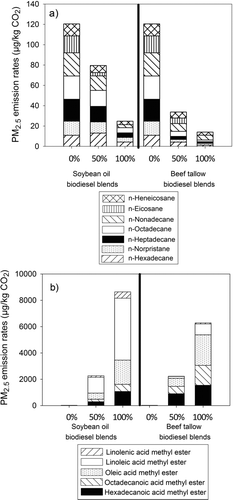Figures & data
FIG. 1 Denuded and undenuded EC and OC emission rates. (a) Influence of denuding aerosol on elemental carbon (EC) emission rates, and on (b) organic carbon emission rates. Backup filters correspond to quartz fiber filters preceded by Teflon membrane filters (TEF) collecting semivolatile organics.
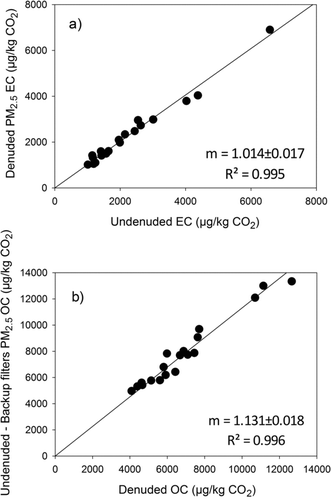
FIG. 2 Fine particle mass, OC and EC emissions rates and the calculated organic mass to organic carbon ratio for PM emissions for each condition: (a) Mass, EC and denuded OC emission rates; (b) calculated organic mass (OM) to organic carbon (OC) ratios for PM2.5.
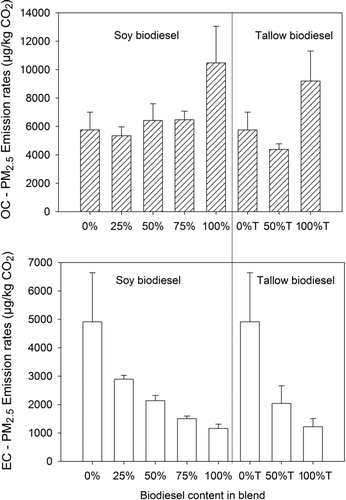
FIG. 3 Size resolved EC and OM emission rates in diesel exhaust from the combustion of (a) pure petroleum diesel, (b) pure soybean oil based biodiesel, and (c) pure beef tallow based biodiesel fuels.
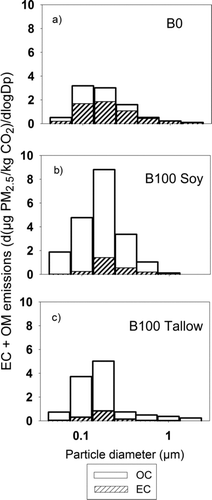
FIG. 4 PM2.5 emission rates of detected dominant organic compound functional groups. (a) Fatty acid methyl esters, fatty acids, and other organics. (b) Polycyclic aromatic hydrocarbons, hopanes and steranes, and n-alkanes.
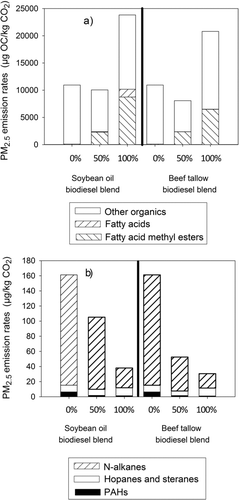
FIG. 5 PM2.5 emission rates of speciated organic compounds: (a) n-alkanes, and (b) fatty acid methyl esters.
